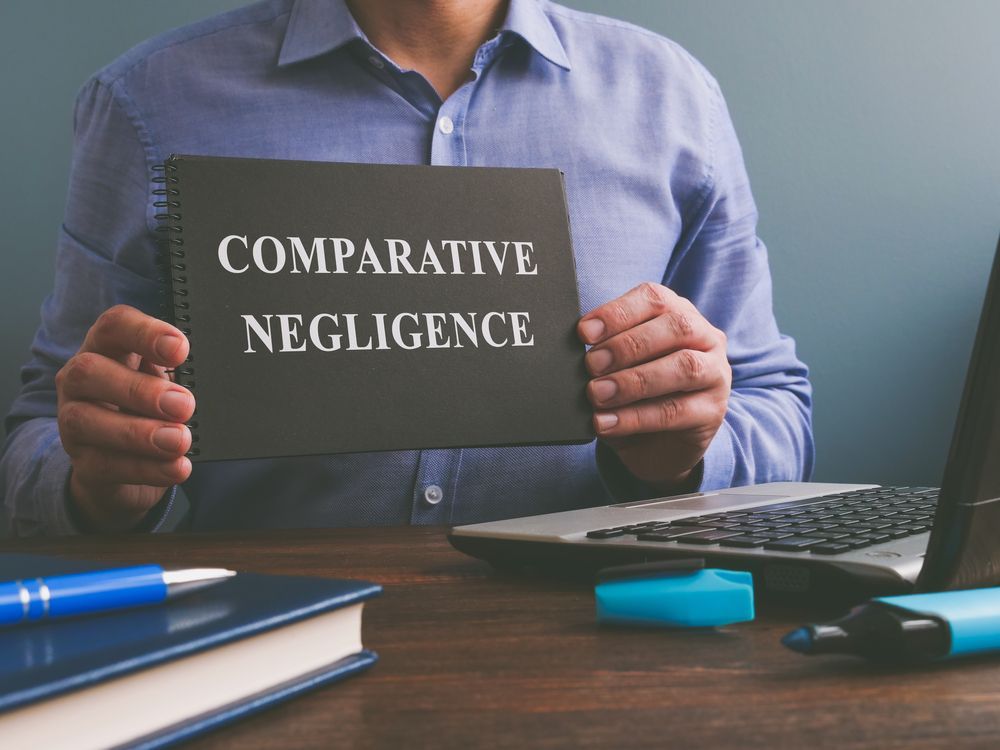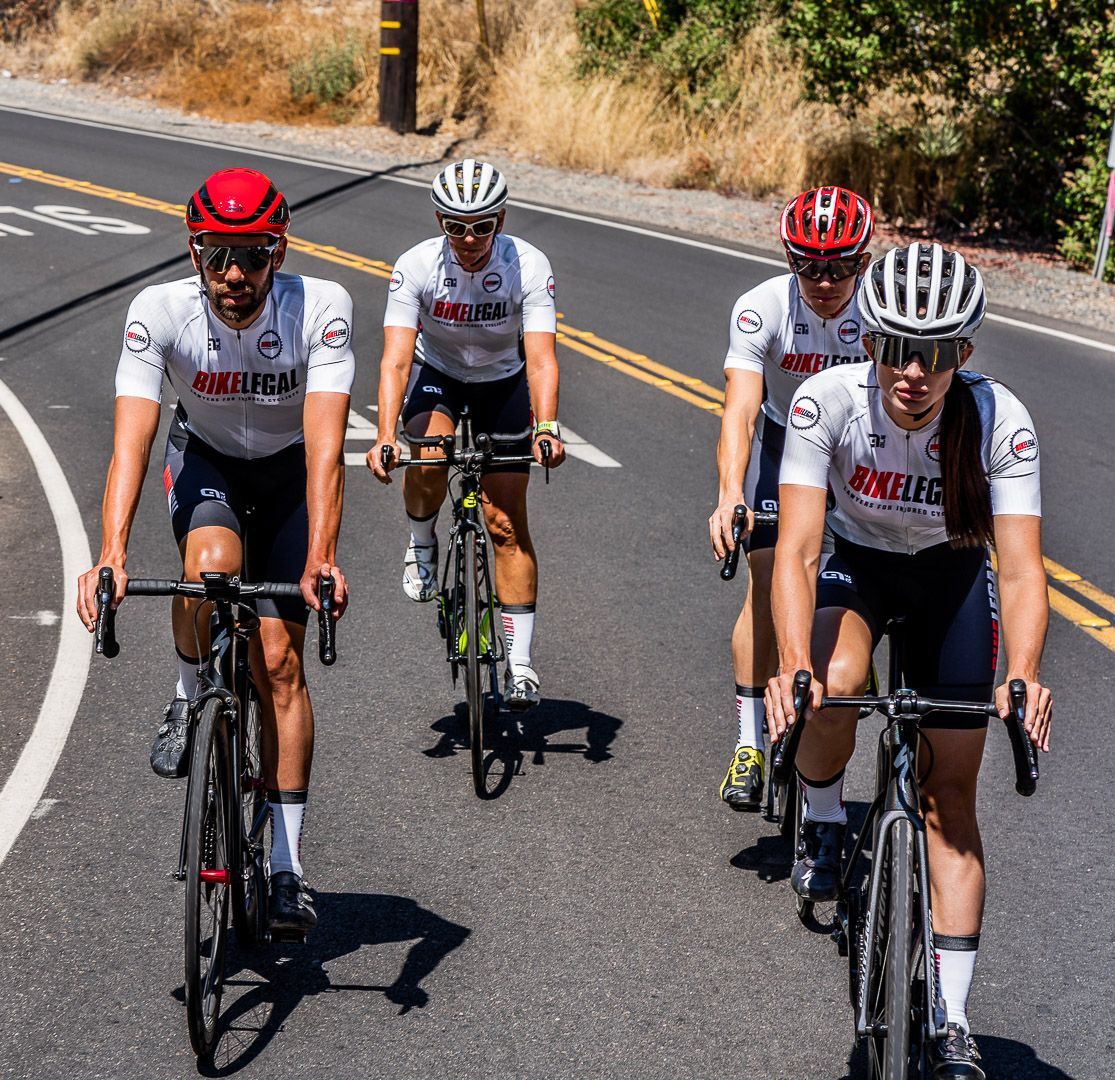Optimizing Your Claim in Comparative Negligence Cases: The Vital Role of a Bicycle Accident Attorney
Follow us on
social media!
Optimizing Your Claim in Comparative Negligence Cases: The Vital Role of a Bicycle Accident Attorney

When you jump on your bike and start pedaling along the road, you savor the freedom and joy of being out in the open air. Unfortunately, the road doesn't always provide a for cyclists. All it takes is a moment of distraction or carelessness from a motor vehicle driver to cause a catastrophic bicycle accident, leaving you with severe injuries, medical bills, and emotional turmoil. While you know you're not entirely to blame, what comes next? How can you navigate the intricate legal aspects of a bicycle accident case and ensure you receive the compensation you're entitled to?
It's crucial to grasp the legal concept of comparative negligence in the aftermath of such an incident. However, there's no need to face the complexities of comparative negligence and the ensuing legal battle yourself.
In this blog post, we will cover the intricacies of comparative negligence in bicycle accident cases and explore the invaluable role of a bicycle accident lawyer in strengthening your claim. By equipping yourself with knowledge and enlisting the assistance of a skilled attorney, you can confidently navigate the legal terrain, striving for the compensation and justice rightfully yours. So, let's delve into the intricacies of comparative negligence and unveil how a bicycle accident lawyer can serve as your unwavering champion in pursuing your claim.
What Is Comparative Negligence?
In legal terms, comparative negligence plays a pivotal role in assessing the level of responsibility borne by each party involved in an accident or injury. This principle is particularly significant in personal injury cases, where the plaintiff seeks compensation for harm or damage caused by the defendant.
When a legal case involving comparative negligence is brought before the court, a comprehensive evaluation of the actions of each party ensues. The court meticulously examines the extent of fault or negligence everyone involved exhibits. Based on this assessment, a specific percentage of responsibility is assigned to each person, ultimately determining the compensation amount they are accountable for.
To illustrate, let's consider a scenario where an accident unfolds between a cyclist and a motorist if the court determines that the motorist bears 60% of the responsibility for the accident. In comparison, the cyclist is 40% at fault, the motorist would only be liable for 60% of the awarded damages. This approach ensures that each party is answerable for their respective degree of responsibility.
Comparative negligence serves as an equitable and impartial method for ascertaining the appropriate distribution of liability in legal proceedings. It recognizes that multiple parties can contribute to an accident to varying degrees and ensures that the resulting compensation aligns with the level of fault attributed to each party.
Types of Comparative Negligence Laws
Regarding comparative negligence, different states may adopt different rules to determine liability in bicycle accident cases. The specific type of comparative negligence applied in a case depends on the state where the accident occurred and the case's particular facts.
Let's explore the two main types of comparative negligence laws: pure comparative negligence and modified/partial comparative negligence.
Pure Comparative Negligence
In states that adhere to the pure comparative negligence principle, there exists an opportunity for a plaintiff to recover damages, even if they are primarily responsible for the accident. The purpose of this type of negligence rule is to fairly assign responsibility based on the degree of fault exhibited by each party involved.
Under the pure comparative negligence rule, the plaintiff is eligible to receive compensation solely for the portion of fault they are not accountable for, regardless of how small that percentage may be. To illustrate, let's consider a scenario where a court determines that the plaintiff bears 99% of the fault for an accident while the defendant carries only 1% of the responsibility. Despite the plaintiff's significant level of fault, they can still pursue damages, but solely for that 1% they are not responsible for.
States like Louisiana, Florida, California, and New York follow the pure comparative negligence rule, ensuring that plaintiffs who are partially at fault can seek compensation for their injuries.
Modified/Partial Comparative Negligence
Most states follow the principle of modified or partial comparative negligence. This approach involves limiting the plaintiff's recovery based on the degree of fault. There are two common variations of modified comparative negligence: the 50% bar rule and the 51% bar rule.
- The 50% Bar Rule
Under this rule, if the plaintiff's degree of fault reaches or exceeds 50%, he/she is not entitled to compensation from the other party involved in the accident.
2. The 51% Bar Rule
Like the 50% bar rule, this rule allows a person to recover damages if their negligence is less than 51% responsible for their injury. In such cases, the damages awarded will be reduced in proportionately to the plaintiff's degree of fault. For example, if a court determines that a plaintiff is 40% at fault, the plaintiff's damages will be reduced by 40%.
Remember, even if you are partially at fault for an accident, you may still be able to recover damages under certain circumstances. The key is having a skilled bicycle accident attorney who can effectively argue your case and advocate for your rights.
In the next section, we will explore the vital role of a bicycle accident lawyer and how their ability to strengthen your claim in comparative negligence cases.
How a Bicycle Accident Lawyer Can Strengthen Your Claim

If you find yourself involved in a bicycle accident case where comparative negligence is a factor, it is crucial to enlist the assistance of a skilled bicycle accident attorney. Their expertise in handling bicycle-related accidents can greatly impact the outcome of your claim, making a substantial difference in its success. By relying on their specialized knowledge and experience, these legal professionals can effectively strengthen your case.
Here's how a bicycle accident attorney can strengthen your claim:
Comprehensive Understanding of Bicycle Accident Laws
A lawyer specializing in bicycle accidents possesses extensive knowledge of the laws and regulations pertaining to such incidents. They possess a thorough understanding of local traffic laws, right-of-way rules, and other legal intricacies that govern bicycle accidents. This expertise enables the lawyer to precisely evaluate the circumstances surrounding your accident and identify the relevant laws that bolster your claim.
Comprehensive Investigation
A skilled attorney specializing in bicycle accidents will carefully examine your case by conducting a comprehensive investigation. They will collect various forms of evidence, including accident reports, witness testimonies, photographs, and surveillance footage, if accessible. By diligently analyzing the details of the accident, the attorney can determine responsibility and illustrate the negligence of the opposing party.
Building a Strong Case
Proving negligence is crucial in any personal injury claim. A bicycle accident lawyer will work diligently to establish the responsible party's negligence. They will analyze factors such as distracted driving, failure to yield, speeding, or violation of traffic laws to build a strong case on your behalf.
Assessing the Degree of Fault
If you've been involved in a bicycle accident, seeking the assistance of a lawyer specializing in such cases can prove invaluable. They will assist you in compiling the essential paperwork required to establish the full extent of your damages. This encompasses medical records, invoices, and assessments from healthcare experts, outlining your injuries, treatment strategies, and long-term outlook. Additionally, your lawyer will take into account other types of losses, including pain and suffering, emotional distress, and the impact on your earning potential, in order to secure just compensation for your ordeal.
Dealing with Insurance Companies
Insurance companies are known for employing tactics to minimize payouts in injury cases. A bicycle accident lawyer will handle all communication and negotiations with the insurance company on your behalf. They will protect your rights and advocate for your best interests, ensuring that you receive the compensation you deserve.
Expert Witness Testimony
In certain instances, including expert witness testimony can significantly enhance the strength of your claim. Attorneys specializing in bicycle accidents possess a valuable network of reliable experts, including accident reconstruction specialists and medical professionals, who can offer crucial insights and testimony to support your bicycle accident case. These experts play a vital role in establishing liability, showcasing the extent of your injuries, and conducting an unbiased analysis of the accident scene.
Litigation Representation
If your case proceeds to trial, a skilled bicycle accident lawyer will be your advocate in the courtroom. They will present a compelling argument, cross-examine witnesses, and counter the opposing party's claims. A lawyer's experience in litigation ensures that your case is presented effectively, increasing the likelihood of a favorable outcome.
Common Causes of Bicycle Accidents and How to Prevent Them
Now that you know about comparative negligence in bicycle accident cases and how an experienced bicycle accident lawyer can strengthen your claim, let's explore the common causes of bicycle accidents and the preventive measures you can take to avoid them.
Failure to Yield Right-of-Way: Motorists failing to yield the right-of-way to cyclists frequently cause accidents. Both motorists and cyclists should understand and obey traffic laws regarding right-of-way. Motorists must be attentive to cyclists and yield when required, such as when turning at intersections or merging lanes. Cyclists should also signal their intentions clearly and adhere to traffic rules.
Dooring Accidents: Dooring accidents occur when drivers open their vehicle doors without checking for approaching cyclists. To prevent such accidents, motorists should use their rear-view mirrors and check for cyclists before opening their car doors. Cyclists should ride far enough from parked cars to avoid collisions if a door suddenly opens. Additionally, cyclists should use bike lanes whenever available.
Unsafe Passing: Motorists attempting to pass cyclists without leaving sufficient space can lead to dangerous accidents. Motorists should give cyclists at least three feet of clearance when passing and only overtake them when it is safe. Cyclists should ride predictably and stay on the right side of the road, allowing motorists to pass safely.
Intersection Collisions: Accidents often occur at intersections where the paths of cyclists and motorists intersect. Both parties should exercise caution when approaching intersections. Motorists should check for cyclists before making turns, and cyclists should make themselves visible by using hand signals.
Lack of Visibility: Poor visibility can lead to accidents, especially during low-light conditions. To maximize visibility, cyclists should wear reflective clothing and use bike lights, while motorists should ensure functioning headlights and stay attentive to cyclists, especially in dimly lit areas.
Protecting Your Rights in Comparative Negligence Bicycle Accidents: How Bike Legal's Experienced Lawyers Can Help
When you encounter difficulties in securing the compensation that is rightfully yours and the opposing party unjustly places the entire blame on you, it is crucial to seek the guidance of our skilled attorneys specializing in bicycle accidents.
At Bike Legal, we understand the complexities of comparative negligence and the tactics used by the opposing party to minimize their liability. Our dedicated team of lawyers will tirelessly to protect your rights and fight for the total compensation you deserve.
Why Choose Bike Legal Law Firm:
- Specialized expertise in handling cases involving comparative negligence.
- Extensive experience in dealing with parties who wrongfully shift blame.
- Thorough investigation and analysis of the accident details.
- Strategic legal approach to challenge allegations of full fault.
- Confidential consultations to discuss your case and concerns.
- No fees unless we win your case.
Contact us today at 877-245-3534 to schedule a free consultation and take the first step toward obtaining the justice and compensation you deserve.
FAQs
What Is the 50 Percent Rule in Comparative Negligence?
The 50 percent rule in comparative negligence states that if the plaintiff is found to be at least 50 percent at fault in a case, they are barred from compensation.
What Is an Example of Comparative Negligence?
In the context of a collision between cyclists and motorists, we can illustrate the concept of comparative negligence. Suppose the court concludes that the cyclist bears 30% responsibility for failing to use hand signals. In comparison, the motorist carries 70% responsibility for exceeding the speed limit. Consequently, the cyclist's damages would be diminished by 30% due to their contribution to the accident.
Can I File a Claim if I Was Partly at Fault for the Bicycle Accident?
You could file a claim for a bicycle accident even if you were partly at fault because comparative negligence allocates compensation based on each party's fault.
What Are the Three Types of Comparative Negligence?
The three types of comparative negligence are:
- Pure comparative negligence
- Modified or partial comparative negligence
- Slight/gross negligence (recognized only in South Dakota)

